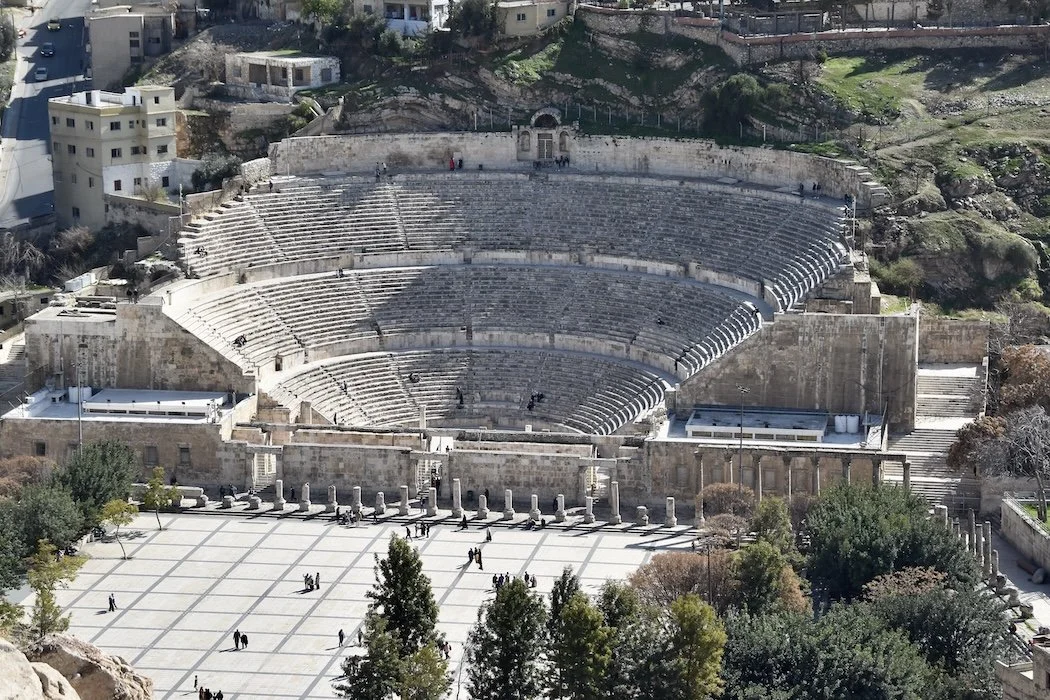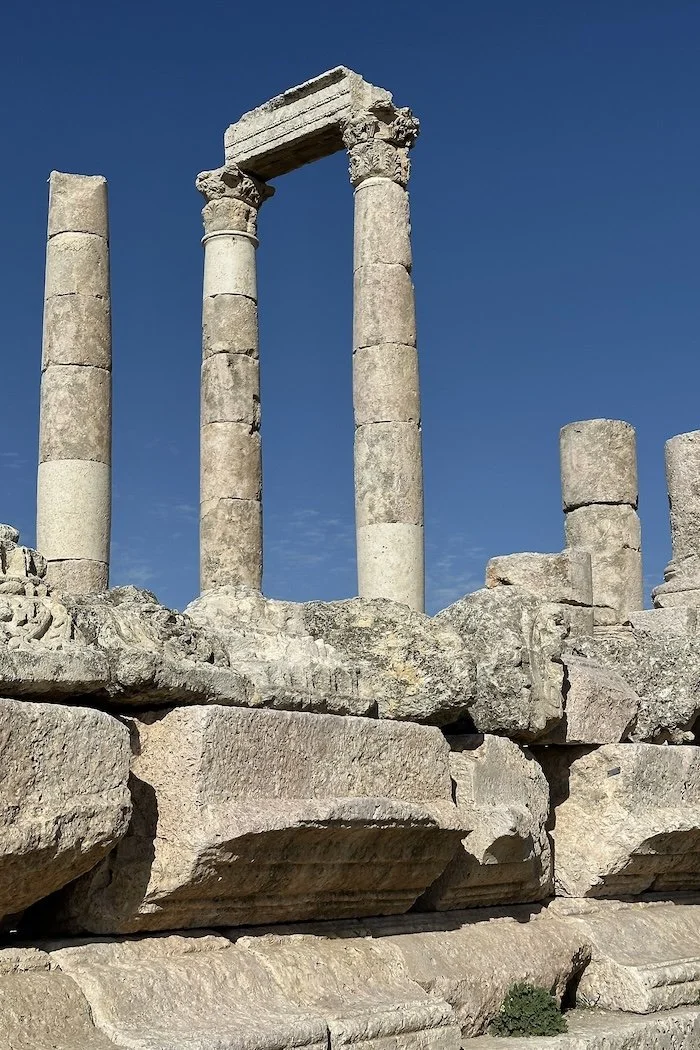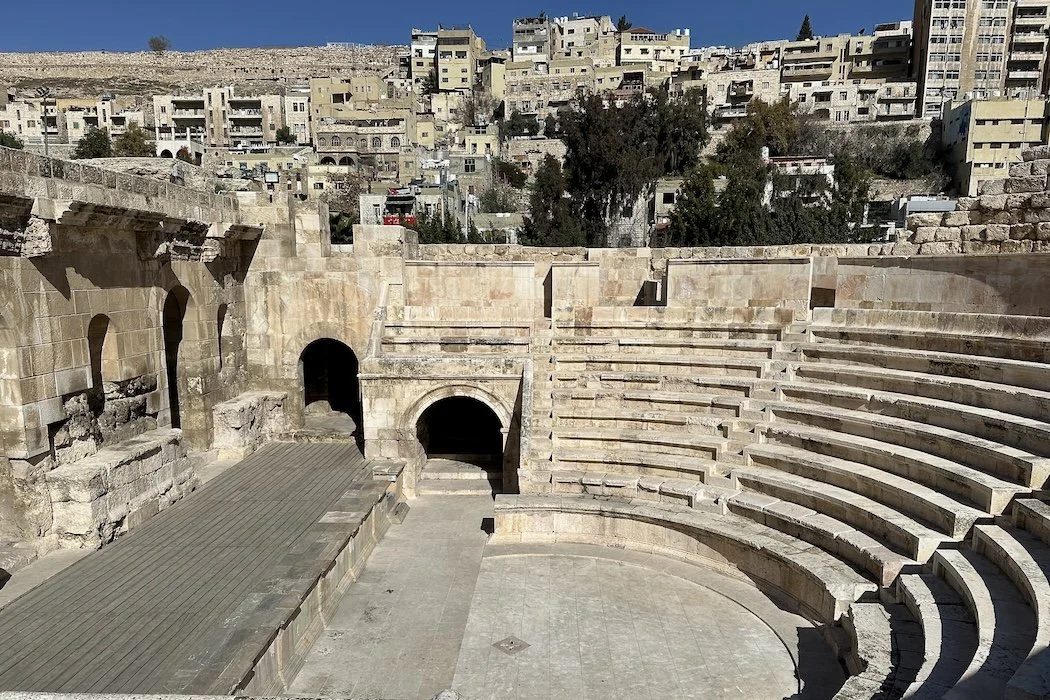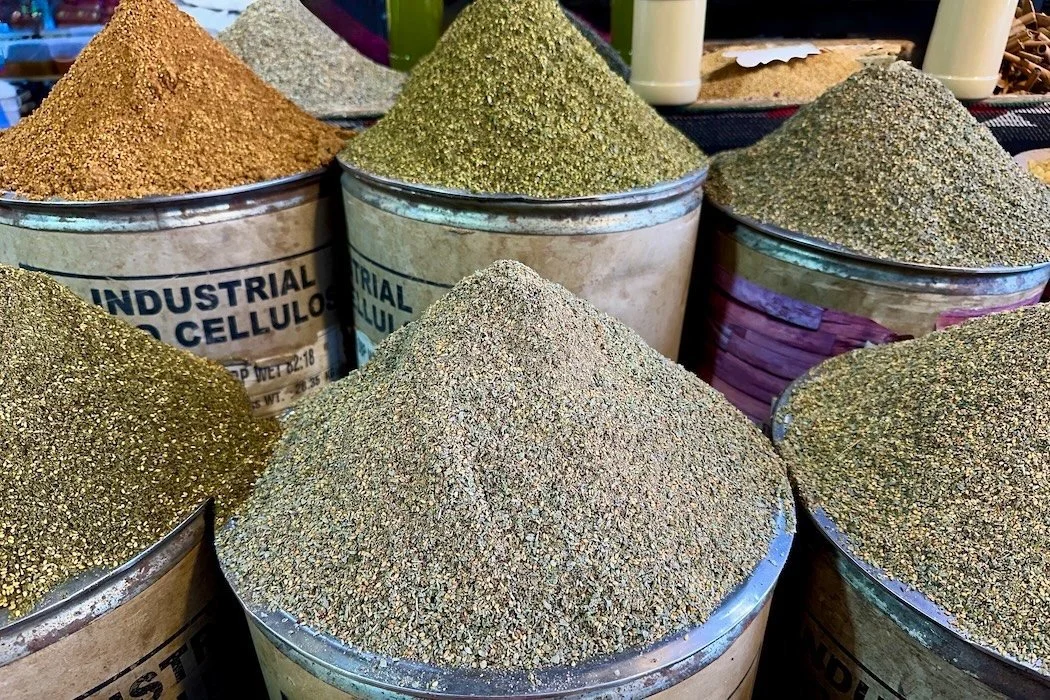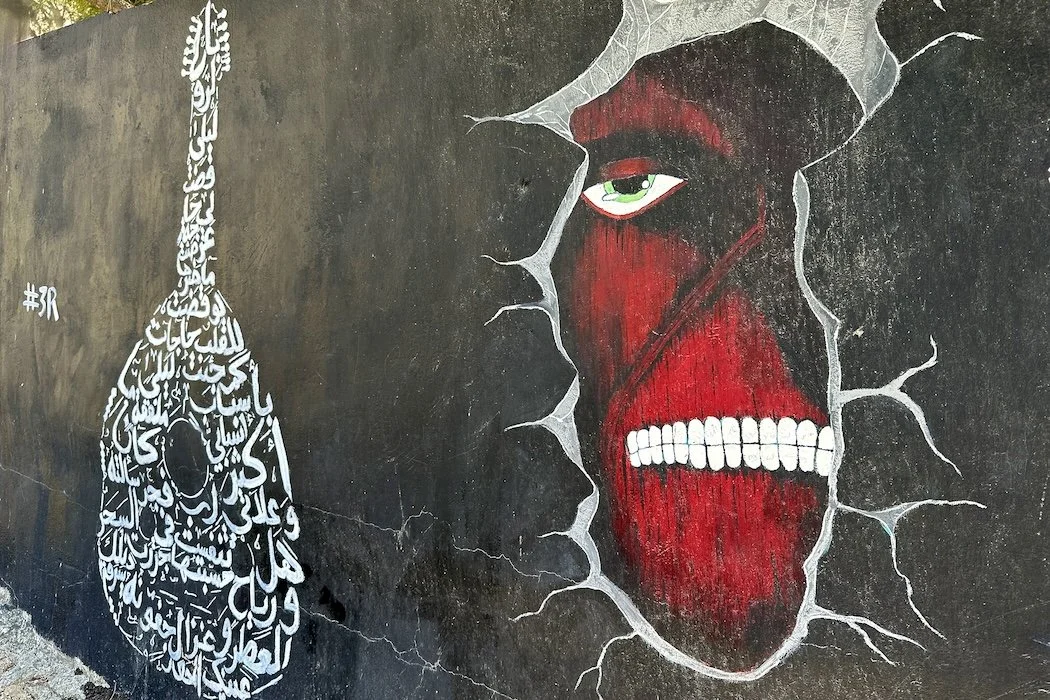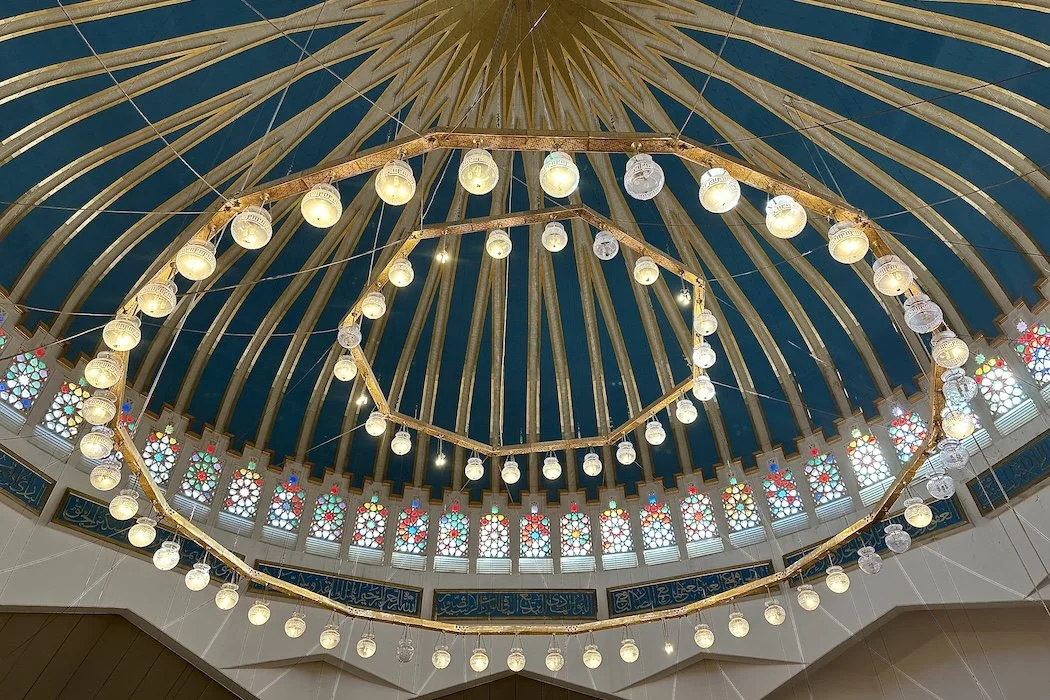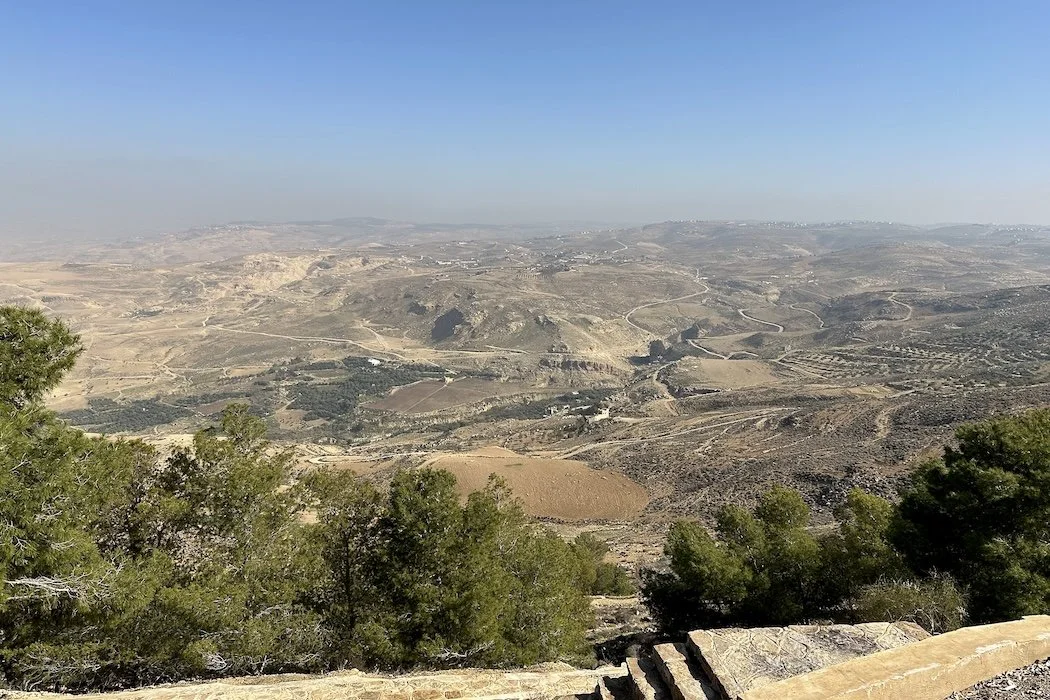Mild-season journey to out-of-the-way Amman
Amman’s Roman Amphitheater and Hashemite Plaza seen from above
“Let me recommend… a long journey, at a mild season, through a pleasant country…” — James Madison
Jordan’s capital, Amman, is a bustling modern Middle Eastern metropolis built on top of and around ancient beginnings. Believed to be one of the oldest continuously inhabited cities in the world with settlements dating from 7000 BCE, modern Amman was only founded in 1921. Like Rome, it was initially built on seven hills of once-forested mountains. As the 13th-century BCE capital of the Ammonite Kingdom, it was known as Rabat Amman (king’s quarters), but Ptolemy II, Macedonian ruler of Egypt, renamed the city Philadelphia a millennia later. Amman flourished under the Umayyad caliphs beginning in 661AD, who left ruined opulent palaces after earthquakes struck. Centuries of decline ensued until Amman became part of the Ottoman Empire, then a British colony, finally gaining independence in 1946.
Late winter is a pleasant time to visit, when the seat of the Hashemite Kingdom is quiet, and the weather is mildly spring-like. The city is a conspicuous juxtaposition of ancient and modern: the King’s residence, government buildings, ancient and new mosques, and numerous souks surround Roman ruins in bustling downtown Jabal Amman. Among the Roman remains, the impressive 2nd-century amphitheater had capacity for 6000 spectators. A climb up 600 steps is worth it for the view. The adjacent Odeon, a largely intact intimate theater, and the nearby partially preserved Roman Nymphaeum also warrant a visit.
Between the Nymphaeum and the Grand Husseini Mosque, wandering through Souk Al-Sukar, one of the oldest vegetable and food markets in Jordan reveals daily life. Around a corner, the Soul Al-Yemeniyyeh is a mere alleyway where tailors make and sell clothing, separately for men and women. Across Ar-Reda Street, is the gold market, Souk Al-Thabab. Pop into Amman’s oldest building, Dukes Diwan, to get a sense of the high ceilings and decorative balconies of yesteryear. From there, it’s an uphill walk through the Jabal al Luweibdeh neighborhood past murals, coffee houses, and alternative culture, to the Contemporary Art Museum. The Darat al Funun- Khalid Shoman Foundation incorporates Byzantine ruins among gardens, and a café terrace overlooking downtown.
It's another uphill walk to the Citadel, perched atop Jabal al-Qala’a hill, an open-air museum inviting visitors to wander among the ruins of numerous civilizations. Inhabited since the Bronze Age, settlement continued through the Iron Age, Persian, Hellenistic, Roman, Byzantine, and Arab Muslim periods. The complex’s National Archeological Museum houses extraordinary artifacts, and outdoor Citadel notables include pillars of the Roman Temple of Hercules, the 8th-century Umayyad Palace complex, known for its grand dome, and a Byzantine Basilica. Views of the city in all directions include the new, eye-catching King Abdullah I Mosque with its blue-tiled dome, in the distance.
Outside Amman, two recommendable daytrips go to Ancient Jerash, and Madaba and Mount Nebo. The latter is where Moses saw the Promised Land, and the views are astonishing. In the mosaic city of Madaba, the Greek Orthodox St. Georges Church has preserved an intricate Byzantine mosaic map of the area covering the church floor. Jerash, known through the ages as Jericho, Antioch, and Gerasa was founded during the 4th century BCE. The city of one thousand columns rivals Turkish Ephesus and Italian Pompeii. The amazing remains include a magnificent oval plaza forum, large and small theaters, temples to Zeus and Artemis, and the longest Roman Cardo (main street) lined with columns, sidewalks, shop stalls, and a drainage system.
Don’t Miss:
Climbing to the top of the Roman Amphitheater to get a sense of its commanding size and for the view over modern Amman.
Serendipity:
Finding the unexpected- after wandering through the Jabal al Luweibdeh neighborhood, finding Byzantine ruins and a lovely café at Darat al Funum.
Lunch Tip:
Authentic Hashem Restaurant, claiming to be the oldest restaurant in Amman, for Arabic salad, falafel, and hummus.
Dinner Tip:
Book a culinary adventure at The Jordanian Kitchen with Wafaa and Seline to create and enjoy the national dish Mansaf, lamb with yogurt and rice, and the Jordanians’ favorite dessert, kunafa, with mint tea.
Bedtime:
Coral Tower Hotel, a comfortable modern hotel, a five-minute taxi ride from the Roman Amphitheater.
Subscribe for inspiration to have my posts drop directly into your inbox. *If you enjoyed what you read, please share this post with like-minded travelers.*
*All photographs are mine, taken with my Nikon D5600 or iPhone 14 Pro.*

